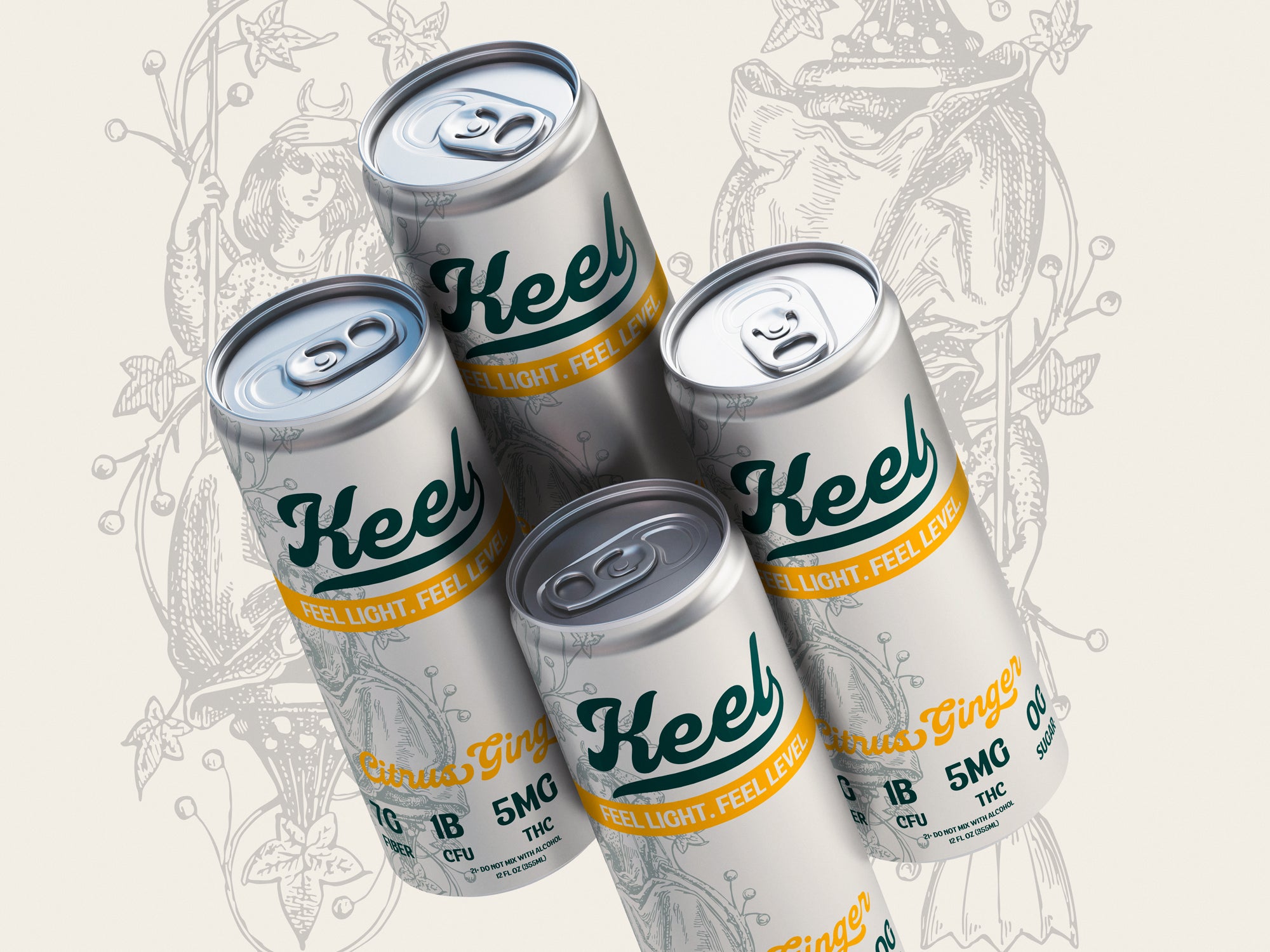TL;DR
CFU = colony-forming units = live bacteria count. Look for drinks with 1B+ CFU guaranteed at end of shelf life, not just at manufacture. Spore-forming strains (like B. coagulans) survive in cans at room temp. Check labels for strain name + expiration guarantee. Higher CFU ≠ automatically better—stability matters more.
A probiotic drink is a beverage containing live bacteria (measured in CFU, or colony-forming units) designed to support gut health when consumed regularly. CFU counts range from 1 billion to 50 billion per serving, but higher numbers do not guarantee better results—strain stability and survivability through stomach acid matter more. Look for drinks that list a specific strain (like Bacillus coagulans GBI-30), guarantee CFU at end of shelf life (not just at bottling), and contain minimal added sugar. Spore-forming strains survive best in shelf-stable cans, while non-spore strains require refrigeration to stay alive until you drink them.
Probiotic Drink Defined
Probiotic drinks are non-yogurt beverages that contain live microorganisms intended to colonize your gut and support digestive health. Unlike yogurt or kefir (which are dairy-based cultured foods), probiotic drinks include kombucha, water kefir, probiotic sodas, and functional beverages formulated with added bacterial strains. These drinks deliver probiotics in liquid form, which some people prefer over capsules or fermented foods.
The category expanded significantly between 2020 and 2025, with brands introducing shelf-stable probiotic drinks that use spore-forming bacteria instead of traditional Lactobacillus or Bifidobacterium strains. This shift made probiotics more accessible—you no longer need refrigeration or immediate consumption after opening. Probiotic drinks now appear in gas stations, gyms, and bars as alternatives to soda, energy drinks, and alcohol.
Not all probiotic drinks are created equal. Some contain live, active cultures that survive digestion and colonize your gut. Others contain dead bacteria or strains that die in stomach acid before reaching your intestines. The key differentiators are CFU count, strain type, and stability guarantees—all of which determine whether the drink actually delivers gut health benefits or just marketing claims.
CFU Explained: Simple Definition + Why Amount & Timing Matter
CFU stands for colony-forming units, a measure of viable (alive and capable of reproducing) bacteria in a probiotic product. One CFU equals one bacterial cell that can divide and form a colony when cultured in a lab. A drink labeled "1 billion CFU" contains 1,000,000,000 live bacteria cells at the time stated on the label (usually at manufacture or at expiration).
CFU counts in drinks typically range from 1 billion to 5 billion per serving. Supplements often contain 10 billion to 50 billion CFU because capsules protect bacteria better than liquid formats. Drinks face challenges: liquid exposes bacteria to oxygen, temperature fluctuations, and acidity, all of which kill fragile strains. This is why spore-forming strains dominate the probiotic drink market—they survive these conditions better than non-spore strains.
Amount matters, but only if the bacteria survive until you drink them and then survive your stomach acid. A drink with 10 billion CFU at manufacture but only 100 million CFU at expiration is less effective than a drink with 1 billion CFU guaranteed stable throughout its shelf life. Timing also matters: probiotics must be alive when you consume them and must survive the 1–3 hour journey through your stomach (pH 1.5–3.5) to reach your intestines, where they colonize and produce benefits.
The FDA does not regulate probiotic CFU claims for foods and beverages (only drugs require FDA approval). Reputable brands verify CFU through third-party lab testing and publish Certificates of Analysis (COAs) showing bacterial counts at multiple time points: at bottling, mid-shelf-life, and at expiration. Without this verification, CFU claims are unverifiable marketing statements.
CFU in One Minute
CFU = the number of live bacteria in your drink. Higher CFU at manufacture means nothing if bacteria die before you drink it. Stomach acid kills most probiotics within 30 minutes, so only acid-resistant strains (like spore-formers) survive to colonize your gut. A drink with 1 billion CFU of a stable strain outperforms a drink with 10 billion CFU of a fragile strain that dies in storage or digestion. Look for: (1) a named strain (not just "probiotic blend"), (2) CFU guaranteed at expiration, and (3) third-party testing (COAs) published by the brand. Effective CFU range: 1–5 billion for drinks, 10–50 billion for capsules. More is not automatically better—strain survival and diversity matter more than raw numbers.
Stability in Cans: Spore-Forming Strains
Most probiotic drinks sold in cans use spore-forming bacteria because these strains tolerate heat, oxygen, and shelf storage without refrigeration. Spore-formers are bacteria that can switch into a dormant state called an endospore when conditions become hostile (low moisture, high heat, acidic pH). In this state, they survive for months at room temperature. When you drink them, stomach acid and intestinal moisture "wake up" the spores, which then germinate into active bacteria in your gut.
Bacillus coagulans is the most common spore-forming strain in probiotic drinks. Research on B. coagulans GBI-30 (a specific, well-studied strain) shows it survives 12–18 months in shelf-stable beverages and remains viable through stomach acid. A 2021 study in Probiotics and Antimicrobial Proteins found that B. coagulans spores retained 90% viability after 12 months at room temperature, compared to under 10% viability for non-spore Lactobacillus strains under the same conditions.
Other spore-formers include Bacillus subtilis and Bacillus clausii, though these appear less frequently in drinks. Non-spore strains (Lactobacillus acidophilus, Bifidobacterium lactis, Lactobacillus rhamnosus) require refrigeration and lose viability rapidly in canned drinks. If a drink contains non-spore strains, it must be refrigerated and consumed within days of opening. Spore strains, by contrast, stay stable at room temp for the entire shelf life printed on the can.
Why does this matter? If you buy a probiotic drink off a grocery shelf in July and it contains Lactobacillus without refrigeration, the bacteria are likely dead by the time you drink it. A drink with B. coagulans, stored at the same temperature, will deliver live bacteria months later. This is why spore-formers dominate the functional beverage category—they work in real-world storage and distribution conditions, not just in lab-controlled environments.
Reading Labels: CFU at End of Shelf Life vs. Day One
Labels use different phrasing to describe CFU counts, and the wording matters. Here's how to decode them:
| Label Phrasing | What It Means | Trustworthy? |
|---|---|---|
| "1 billion CFU at time of manufacture" | The drink contained 1 billion CFU when bottled, but no guarantee it's still alive months later. | ❌ No. Bacteria die over time. This phrasing avoids accountability. |
| "1 billion CFU at end of shelf life" | The brand guarantees at least 1 billion live bacteria remain when the drink expires (often 12–18 months post-bottling). | ✅ Yes. This requires overfilling at manufacture (e.g., 3 billion CFU) to account for die-off. |
| "1 billion CFU per serving" | Ambiguous—could mean at manufacture or at expiration. Check for clarification elsewhere on the label. | ⚠️ Maybe. Look for "guaranteed through expiration" or similar language. |
| "Contains probiotics" | No CFU count provided. Could be 1 million CFU or 1 billion—impossible to verify. | ❌ No. Vague claims indicate weak formulation or lack of testing. |
| "Bacillus coagulans GBI-30, 1B CFU" | Names the specific strain and CFU count. Strain name indicates third-party testing and patent protection. | ✅ Yes. Specific strains have clinical research backing their efficacy. |
Always check the expiration date (or "best by" date) and buy drinks with at least 6 months remaining before expiration. Even spore strains lose some viability over time. A drink 2 months from expiration will have fewer live bacteria than one 12 months from expiration, even if both claim "1 billion CFU at end of shelf life."
Look for brands that publish Certificates of Analysis (COAs) on their website. COAs show third-party lab test results verifying CFU counts at manufacture, mid-shelf-life (6 months), and expiration (12–18 months). If a brand won't publish COAs, their CFU claims are unverified. Reputable brands test every production batch and make results public because they have nothing to hide.
Sugar, Calories, and Daily Fit
Probiotic drinks vary widely in sugar and calorie content. Some contain 0 grams of added sugar, while others pack 15+ grams per serving. High sugar content defeats the purpose of probiotics—excess sugar feeds harmful gut bacteria (like Candida) and can cause blood glucose spikes, offsetting the benefits of the live cultures.
Aim for drinks with under 5 grams of added sugar per serving. Natural sugars from fruit juice or prebiotic fibers (which appear as "sugar" on nutrition labels but aren't added sweeteners) are fine in moderation. Avoid drinks sweetened with high-fructose corn syrup, cane sugar as the first ingredient, or artificial sweeteners that may disrupt gut bacteria (though research on this is mixed).
Calorie counts range from 10 calories (plain probiotic waters) to 150+ calories (probiotic drinks with juice, protein, or fat). If you're drinking probiotics daily, choose options under 50 calories per serving to avoid unintentional calorie creep. A 100-calorie probiotic drink consumed twice daily adds 200 calories—equivalent to a small meal—which can impact weight management if unaccounted for.
Daily fit: one probiotic drink per day is sufficient for most people. Your gut doesn't need 20 billion CFU daily unless you're recovering from antibiotics, illness, or have a diagnosed gut condition. Consistency matters more than quantity—drinking 1 billion CFU daily for 30 days is more effective than drinking 10 billion CFU sporadically. Pair your probiotic drink with fiber-rich foods (or a synbiotic drink that includes prebiotic fiber) to maximize bacterial colonization and activity.
Frequently Asked Questions
Do higher CFUs always mean better?
No. CFU count is meaningless if the bacteria don't survive storage, stomach acid, and digestion. A drink with 1 billion CFU of a spore-forming strain like Bacillus coagulans will outperform a drink with 10 billion CFU of a fragile, non-spore strain that dies before reaching your gut. Strain stability, acid resistance, and shelf-life guarantees matter more than raw CFU numbers. Additionally, very high CFU counts (50+ billion) can cause bloating or digestive discomfort in some people, especially when starting probiotics. Start with 1–5 billion CFU daily and increase only if needed.
Can I drink probiotics daily?
Yes, and daily use is recommended for consistent gut health benefits. Probiotics do not permanently colonize your gut—they pass through your digestive system within 24–48 hours. To maintain elevated levels of beneficial bacteria, you need to consume probiotics daily or at least 5–6 days per week. Studies on probiotic efficacy typically use daily dosing for 4–8 weeks to show measurable improvements in digestion, immunity, and gut microbiome diversity. If you skip several days, your gut returns to its baseline state. Daily use is safe for most people; consult a doctor if you have a compromised immune system or serious health conditions.
Are all probiotic strains the same?
No. Different strains serve different purposes. Lactobacillus rhamnosus GG is well-studied for reducing antibiotic-associated diarrhea. Bifidobacterium lactis helps with constipation and bloating. Bacillus coagulans supports overall gut balance and survives stomach acid better than most strains. Saccharomyces boulardii (a yeast, not a bacteria) is effective for preventing traveler's diarrhea. Strains are identified by genus (Bacillus), species (coagulans), and strain code (GBI-30). Generic labels like "probiotic blend" or "Lactobacillus species" are red flags—reputable products list specific strains because efficacy is strain-specific, not species-wide.
Do probiotics need to be refrigerated?
It depends on the strain. Spore-forming strains (Bacillus coagulans, Bacillus subtilis) are shelf-stable at room temperature for 12–18 months. Non-spore strains (most Lactobacillus and Bifidobacterium species) require refrigeration to stay alive. Check the label: if it says "refrigerate after opening" or "keep refrigerated," the probiotics are fragile and will die at room temp. If it says "store in a cool, dry place" or lists a Bacillus strain, refrigeration is optional (though it can extend shelf life). Probiotic drinks sold in grocery store aisles (not refrigerated sections) almost always use spore-formers.
How long does it take for probiotics to work?
Most people notice digestive improvements (less bloating, more regular bowel movements) within 1–2 weeks of daily probiotic use. Immune and mood benefits may take 4–8 weeks to become apparent, as gut microbiome remodeling is a gradual process. If you see no improvement after 4 weeks, try a different strain—your gut may not respond to the specific bacteria in your current drink. Effectiveness varies by person, baseline gut health, diet, and stress levels. Probiotics work best when combined with adequate fiber intake (25–38 grams daily), hydration, and sleep.
Can I take probiotics with antibiotics?
Yes, but timing matters. Antibiotics kill bacteria indiscriminately—both harmful pathogens and beneficial probiotics. Take your probiotic drink at least 2–3 hours before or after your antibiotic dose to minimize kill-off. Continue probiotics during and after antibiotic treatment for at least 2 weeks post-antibiotics to help restore gut flora. Some strains (like Saccharomyces boulardii and Bacillus coagulans) are more resistant to antibiotics than Lactobacillus strains. Consult your doctor before combining probiotics with antibiotics, especially if you have a weakened immune system.
Updated On
October 22, 2025
What Changed
- Added 2021 Probiotics and Antimicrobial Proteins study data on B. coagulans spore viability over 12 months
- Expanded label-reading section with comparison table (CFU phrasing, trustworthiness)
- Clarified CFU guarantees: end-of-shelf-life vs. time-of-manufacture claims
- Added "CFU in One Minute" explainer for quick reference
Related Articles
- CFU Explained: What Colony-Forming Units Mean for Gut Health – Deep dive into CFU testing, strain differences, and clinical efficacy
- Synbiotic Drinks: Prebiotics + Probiotics Together – Learn why pairing probiotics with prebiotic fiber improves results
- Shop Keel Probiotic Drink – 1B CFU Bacillus coagulans verified at end of shelf life, 7g fiber, 0g added sugar
- View Our Certificates of Analysis – Third-party lab testing results for every Keel production batch
Sources
- Probiotics and Antimicrobial Proteins (2021). Stability and viability of Bacillus coagulans spores in shelf-stable beverages over 12 months at ambient temperature.
- Mayo Clinic Press (2025). Probiotic drinks: What really works for gut health, from kefir to probiotic sodas. https://mcpress.mayoclinic.org/healthygut/probiotic-drinks-what-really-works-for-gut-health-from-kefir-to-probiotic-sodas/
- Omni-Biotic Life (2025). Fiber and Probiotics: Better Together? https://omnibioticlife.com/blogs/blog/can-you-take-fiber-and-probiotics-together
- FDA (2024). Probiotic regulation guidelines for food and beverage products (non-drug applications).


